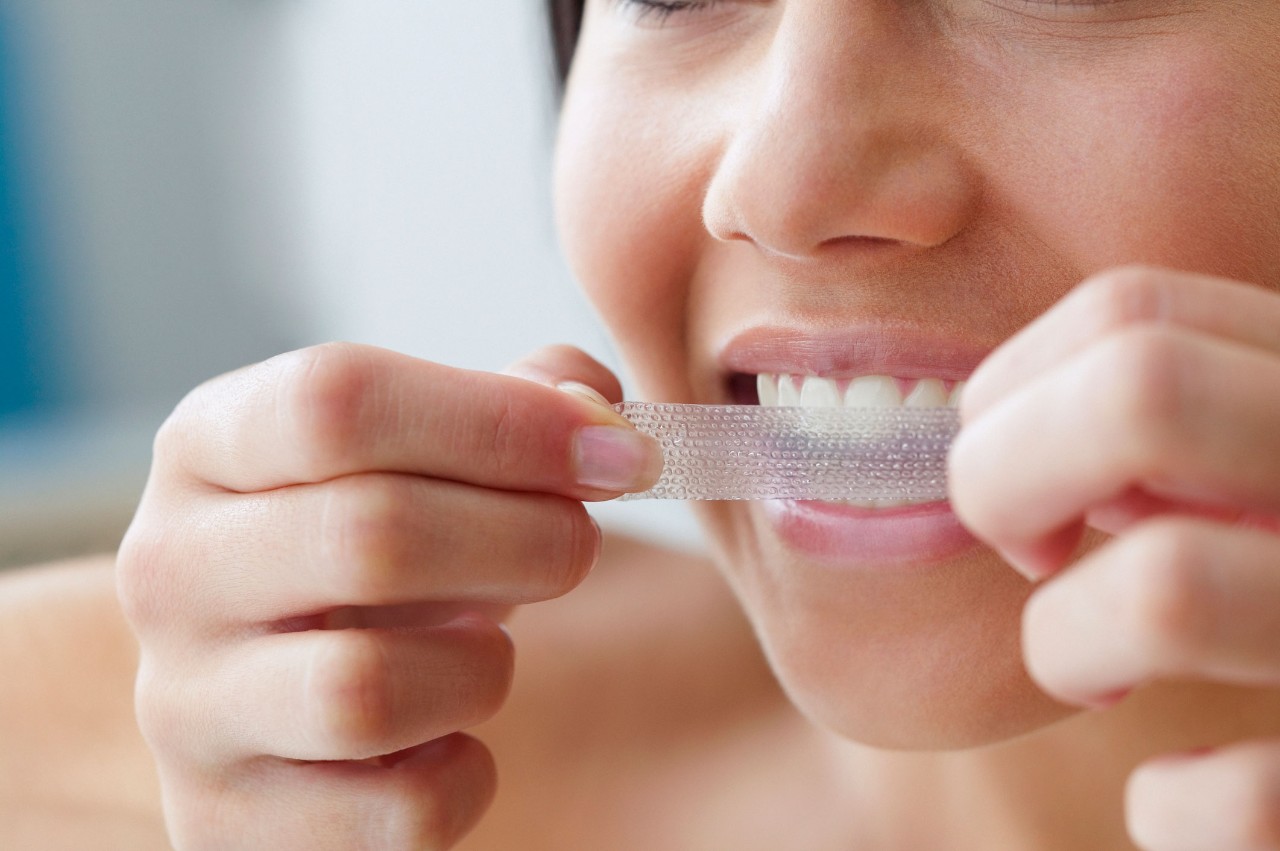Go Easy with Teeth Whitening Home Remedies

Dentists say people are overdoing it with teeth whitening home remedies. Ignore the TV ads; here’s how you should use these products safely and as directed.
Are teeth whitening home remedies really safe? You may have wondered this after wandering through the dizzying variety of bleaching products that line drugstore shelves.
If your teeth feel a little more sensitive after using those ubiquitous little whitening strips or mouth trays, it turns out you’re not alone. One study found that just over half of people reported mild sensitivity for up to a month after whitening with several types of drugstore bleaching products. Problems disappeared within four weeks — but 4 percent reported severe sensitivity for as long as two weeks. Those with receding gums (gingivitis) were at most risk.
Does that mean bleaching is harmful? No, say dentists — not when products are used as recommended.
YOU MIGHT ALSO LIKE: How to Keep Your Gums Healthy
That’s not always what happens. Many people go overboard — and ads suggesting whitening products can be used safely every time you have a big night out don’t help matters. Relentless advertising, along with social pressure and unclear guidelines, can combine to encourage overuse. Dentists are reporting complaints from patients who are overdoing it, leading to increased pain and sensitivity. Some suggest whitening can become an unhealthy preoccupation.
Whitening also won’t damage tooth enamel, most experts say, but it will likely weaken it, at least temporarily. In a 2009 study, four common bleaching products reduced enamel hardness by 1 to 2 nanometers and diminished surface elasticity by 6 to 19 percent. A tray method tested in the study affected hardness significantly more than a strip-whitening product.
If you’re using teeth whitening home remedies, take it easy. Follow product recommendations, and don’t whiten more than once a year. A few more tips:
- If you use a home product, watch for ill-fitting trays, and be sure the gel doesn’t touch anything but your teeth. Carbamide peroxide, the lightening ingredient found in the majority of products — and the one used in all office treatments — can irritate oral tissue, particularly at high concentrations (over 10 to 15 percent).
- The American Dental Association (ADA) recommends always consulting with a dentist before whitening, and says permanent damage has been reported in very rare cases. Be especially sure to check in with your dentist if you have a single darkened tooth, which could be a sign of conditions such as an abscessed tooth, decay, or leaking restorations. In the rare case a tooth has a crack, cavity, or other damage, the peroxide used in whitening could enter the tooth itself. That’s when you could be in for a world of pain, and might even end up needing a root canal.
- When you buy, choose major brands. Whiteners aren’t regulated by the Food and Drug Administration, and while the ADA has awarded its seal of approval to a number of whitening toothpastes, it has yet to do so for an over-the-counter bleaching product. Many products sold online may not contain what they say they do. Never use anything acidic, which (like sodas and wine) will eat away at enamel. Stick to peroxide formulas to whiten safely and effectively.
There are also a few ways to cut down on sensitivity and remineralize teeth after a strong whitening treatment. Dentists suggest using a toothpaste that contains potassium nitrate (such as Sensodyne) for a couple of weeks before and after whitening.
You can also double up on fluoride. Two forms to look for are stannous fluoride and sodium fluoride, found in toothpastes like Crest Pro-Health or Colgate’s prescription-only Prevident 5000 (a much cheaper generic version is also available). Add a fluoride mouthwash — simply check the labels at drugstores to find one — or ask your dentist for a fluoride treatment in conjunction with an in-office whitening procedure. They might also include potassium nitrate to the trays used for whitening.
Potassium nitrate and fluoride are about equally effective in reducing sensitivity, and both will help restore enamel by remineralizing teeth. Another product, Crest Sensi-Stop, may be worth trying — it incorporates potassium oxalate, which has been shown to reduce sensitivity.
A final tip: if you’d like something gentle, try a basic whitening toothpaste — but make sure the ingredient list contains peroxide. Anything else, no matter what it claims, will only provide a mechanical polishing, which you could get from virtually any product.
Updated:
April 08, 2020
Reviewed By:
Janet O’Dell, RN